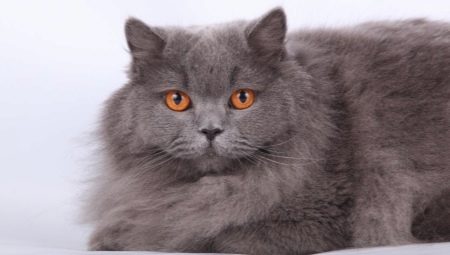British longhair cats remained in the shade for a long time - this was due to many shortcomings of this breed. After breeders improved the British, the demand for these animals increased. Many pet lovers dream of having such a cat. Often you can find another breed name - Highlander. These pets have a complaisant character, with their owners they are affectionate and friendly.
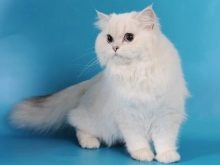
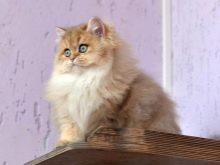
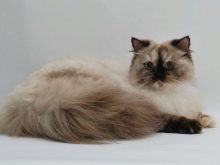
Origin history
In the last century, breeders have been actively involved in improving the British cat breed and breeding new animal colors. For this, a lot of breeding work was carried out, short-haired representatives of the British were crossed with Persian cats. Thus, experts and brought highlander. Two world wars significantly slowed down the process of breeding long-haired cats.
In England, the pedigree of animals is very strictly monitored, therefore it is important that the ancestors of cats do not have long hair, in which case they will be considered noble and thoroughbred. For this reason, the highlanders have long succumbed to culling.
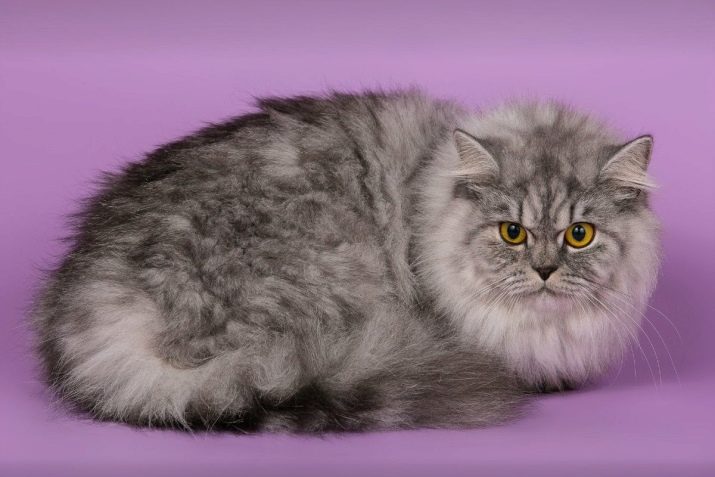
To date, these cats have become very popular among lovers of the cat family. Therefore, now breeding is carried out purposefully. The International Cat Association listed this breed of animal in 2001. The recognition of the long-haired British received as an independent and experimental breed. Three years later, specialists introduced the breed standard of highlanders to the world.Only 10 years ago, the World Cat Federation system announced the official recognition of the breed.
Since then, animals have gained the right to participate in exhibitions and even claim prizes.
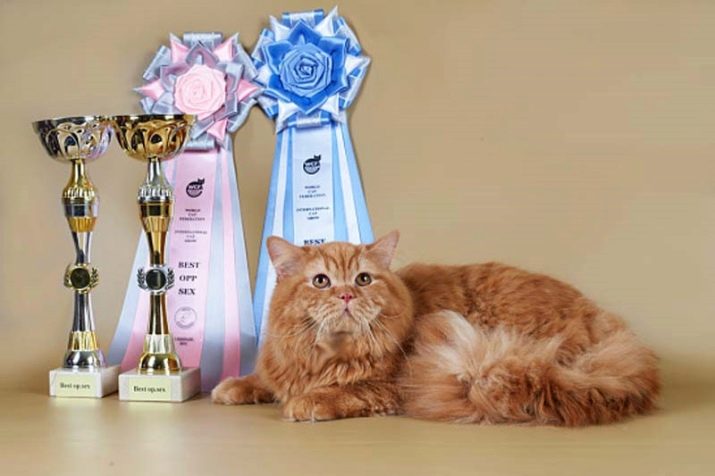
Description
The appearance of the highleaders is practically no different from their ancestors - short-haired British. The main point in the differences of species is the length of the coat of animals.
The long-haired breed of British cats is distinguished by its strong physique. Their hips are very powerful, the same goes for the shoulders. The back of the animals is straight, the chest is quite wide. The neck of the animals, although short, is very massive. The British have a pronounced anatomical difference, the size of cats noticeably exceeds the size of cats.
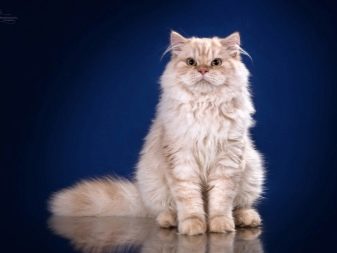
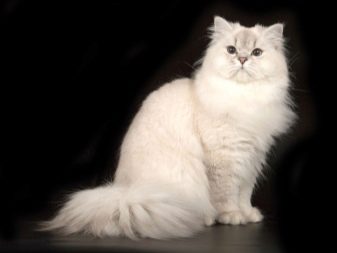
As with many animal species, breed standards have been developed for highlander.
- The large head is round in shape, large cheeks, which are also very developed, mustache, located on convex pads.
- The muzzle of the animals is emphasized by wide cheekbones. The massive chin of cats has a round shape.
- The straight nose of the highlander is very short, the depression is almost imperceptible, and there is no stop.
- Ears of cats are low, have a small size, rounded to the tips.
- The large eyes of the animal are deep set and have a round shape. The color scheme is diverse, in any case, the eyes always combine favorably with the coat.
- Muscular short limbs have large and massive pads.
- A thick short tail is rounded to the tip.
- The standard weight for cats is 4-5 kilograms.
- The standard weight of cats is 5-7 kilograms.
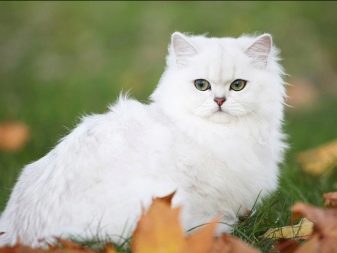

The coat of the British is of medium length, has a high level of density and has a thick undercoat. Due to its volume, the coat is practically not adjacent to the body of the animal. The fur of the fluffy British is distinguished by a rather coarse structure, while it is softer to the touch than their relatives with short hair. The fluffy coat around the neck resembles a chic collar.
Typically, the British tail is very fluffy.

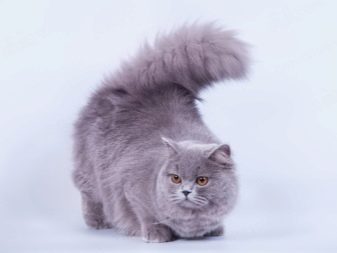
Character Features
Longhair British have a calm character. They are also considered very balanced. Animals are pretty hard to scare or piss off. If you harm a pet, he will remember the offense for a long time and hide away from the eyes of households. These Britons tolerate loneliness perfectly and rarely need the company of their owner. They calmly wait for their household and have a great time alone.
There is nothing wrong with the fact that the pet will be left alone at home. Furniture and various interior elements will definitely not be spoiled. In addition, the British are non-conflict animals, so they can safely be left alone with other pets.
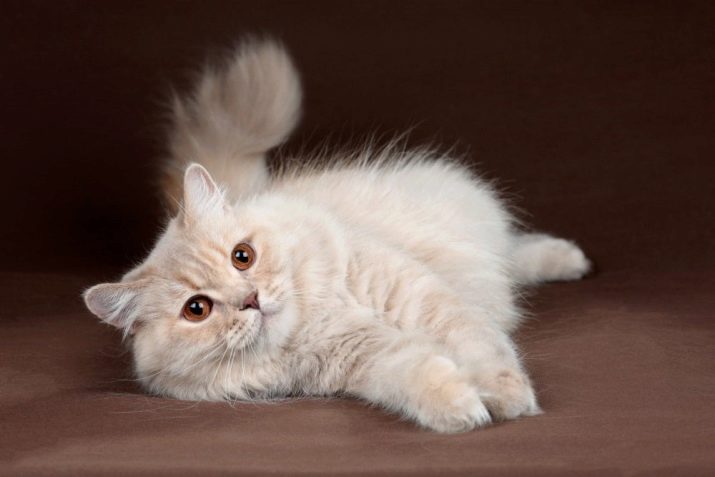
Despite the love of loneliness, highlanders are very sociable cats. They can easily find a common language with other pets, whether it be a small rodent or a large dog. Cats of this breed are considered quite sedate and restrained. For this reason, you are unlikely to see your pets angry and aggressive.
Often children love to play with them, while cats are able to withstand any prank. Although cats do not like increased attention to themselves, they are calm about this. If they get bored with this, they simply retire to another room. They owe such qualities to their high intellect and intelligence.
British kittens are very fond of playing with their owners. They are overly active and inquisitive. They have a high level of adaptation to new conditions. Such a pet will quickly become a friend to its owners.
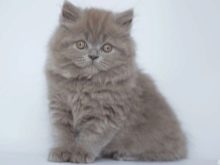
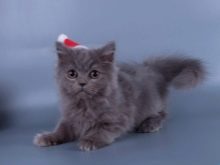

Highlander animals are very well-mannered, so they can quickly be accustomed to home order. They will unquestioningly follow all the rules. Cats get accustomed to the pot quite quickly, so no problems should arise.It is advisable to do this from an early age pet. As they grow older, they become slower and calmer. Between a dream and a game with their master, they will choose the first. It is amazing how restrained these cats are, even in severe hunger they will never be the first to ask for food, they will not beg for it, and create a lot of noise in the house.
The British hunting instinct is completely absent. They can’t cope with harmful rodents.
Highlanders owe their calm calm to a stable psyche. Such cats are practically not subject to stress, and treat such situations normally. They will not be afraid of going to the doctor or frequent transportation. Participating in exhibitions, the British are quite calm about a large crowd of people.
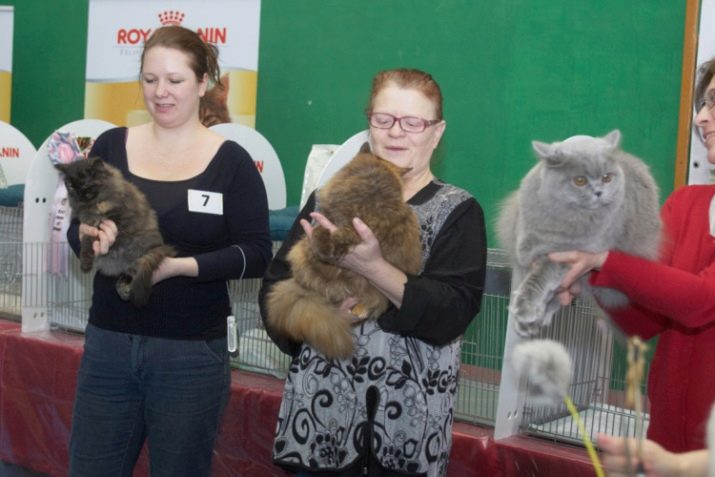
Life span
The longevity of British longhair cats directly depends on the conditions of the animals. There are many undesirable factors for pets that can provoke their premature death. Basically it can be illiterate cat care or improper nutrition. The animal must not be subjected to stress and disease.
Genetics has a very big influence on the longevity of the British. Although these animals have an excellent immune system, they may have an inherent predisposition to certain diseases.
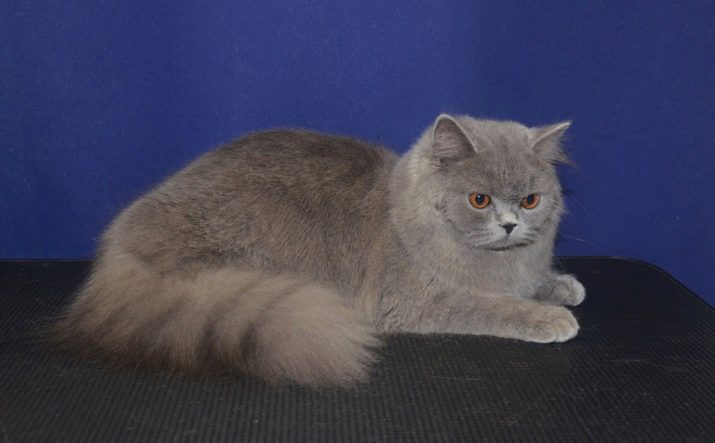
On average, highlanders live up to 15 years. If you create comfortable conditions for the animal, then they can live for more than 20 years. It largely depends on the care and diet of the animal. There are basic recommendations of specialists who will help owners to extend the life of their furry friends.
- Fresh air strengthens the immune system of cats, so regular walking is vital for them.
- If the owners do not want to let their pet out of the apartment, then sometimes it is advisable to take it to the balcony.
- It is recommended to regularly carry out wet cleaning, and to air the rooms in the house.
- Cats react poorly to drafts, so it is better to eliminate them immediately. Animals should also not be exposed to hypothermia.
- The secret to pet longevity is an active lifestyle. Play various outdoor games with animals.
- Occasionally show your Briton to the vet. Doctors often advise providing animals with minerals and vitamins.
- Purebred highlanders need a special healing herb. You can buy it at a specialty store or pharmacy.

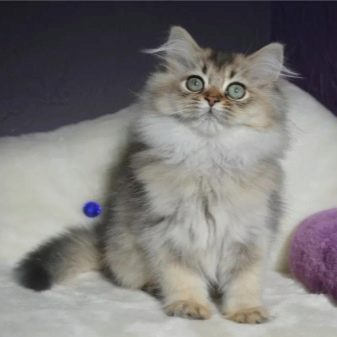
Guided by these simple rules, you can make your pet's life bright and long.
Types of color
Most representatives of cats of this breed are inherent in the whole coat color. It is rare to find animals with various marks on the body. Certain standards for the color of the breed have not been established, it can be anything. You can find several varieties of colors of British wool.
- Tortoiseshell. For this type of color, the presence of spots on the body of the animal is characteristic. They can be black and red. There are times when the spots are cream and blue.
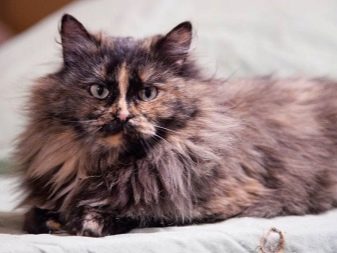
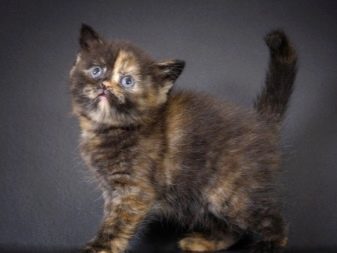
- Smoky. The outer cover has a solid gray color, but the undercoat of cats is painted white. An incredibly contrasting shade of wool makes the Briton very attractive. The ears of the animal are painted silver. The same goes for the collar zone. But the back and limbs are black.
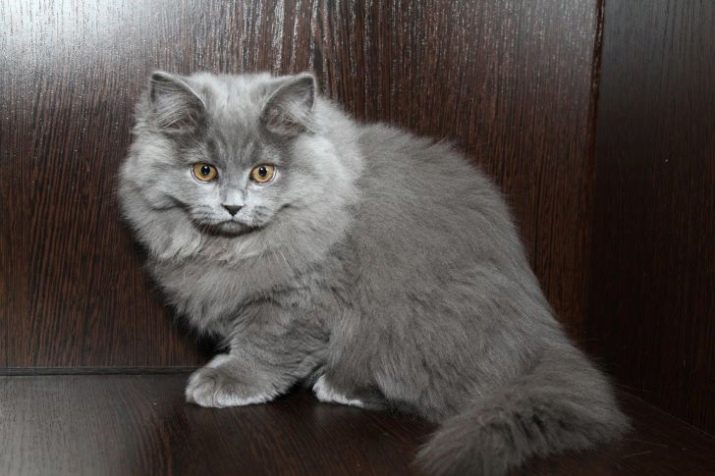
- Tabby. In such cats, the coat can have a marbled, golden, ticked and spotted hue. There are animals with a striped color. Most representatives of marble cats have a spot on their forehead that resembles the letter “M”. It clearly stands out from the main coat color of the animal. The whole body of the cat is covered with spots and patterns in the form of rings. On the back you can see a beautiful pattern resembling a butterfly.
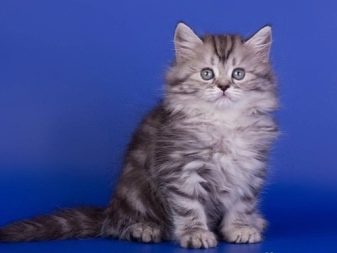
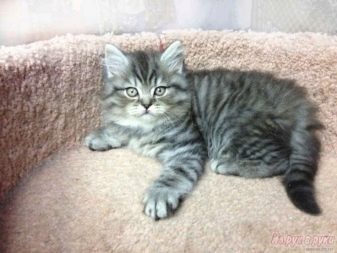
- Bicolor. The name already speaks for itself - the basic white color of these British is combined with another color variety. The white shade of the coat occupies most of the body and only 1/3 of the additional color. However, this part has a rather saturated shade, and white hairs are completely absent.
One ear differs from the other in color, and the back and limbs are covered with a small number of spots. Usually a small speck can be seen on the head.
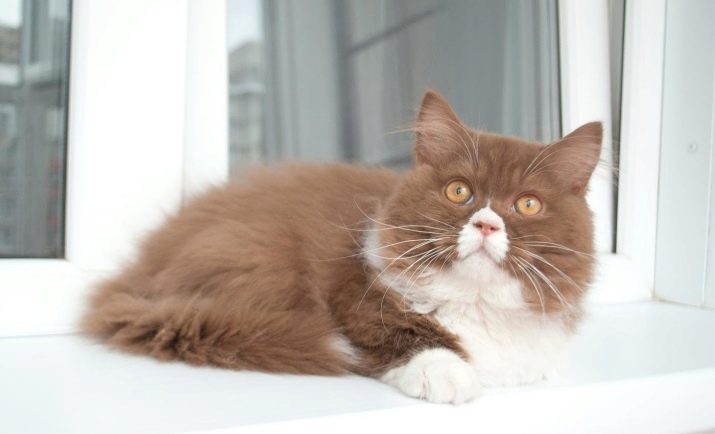
- Colorpoint. This color is also called Siamese. Cats in this case have a snow-white coat color. The muzzle is often covered with a masked pattern and can be of any color. The same goes for the limbs, tail and ears.
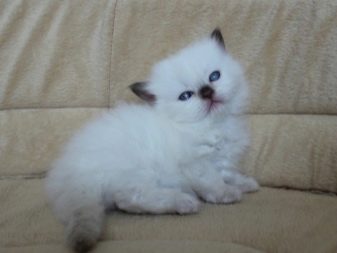
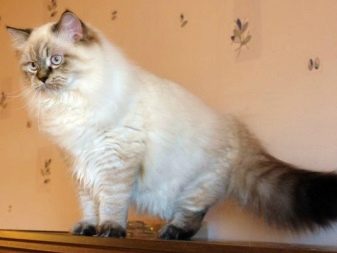
Conditions of detention
Caring for a long-haired British will not take away much of your time and energy. It is only necessary to study this issue in more detail and get acquainted with all the nuances of keeping cats.
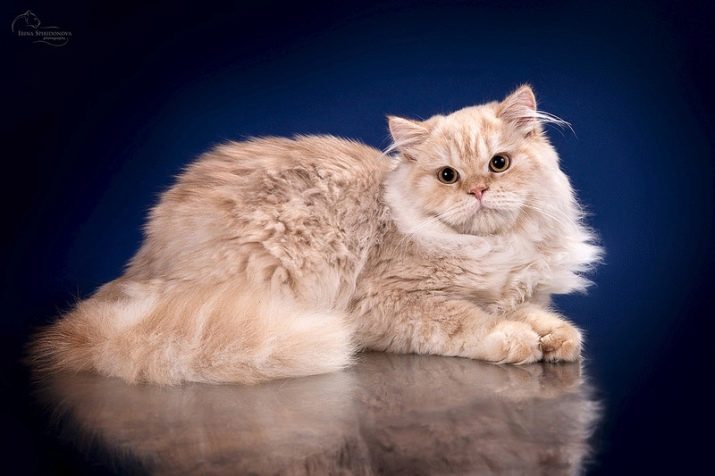
Appearance care
This process is quite simple, you need to pay attention to the main points in caring for the appearance.
- Combing out. The coat of thoroughbred British does not slip, which can not be said about their ancestors - Persian cats. The hair should be combed at least twice a week. To do this, it is best to purchase a rubber brush. Many owners resort to the use of special mittens, which removes dead hair on the body of the pet. When the animal sheds, a combing procedure is performed every day. In the summer season cats are sheared, so they feel much more comfortable.
- Bathing. This process is considered very painful for the British, since they do not like water. For this reason, kittens are taught this procedure from a very young age. A bathing day is usually arranged no more than three times a year. During bathing, shampoos are applied to the cover specifically for animals with long hair. Such a tool can be bought at any pet store. In no case should you use shampoo intended for humans.
- Ear care. Inspect the ears of the British should be no more than three times a month. To clean them, you need to take a cotton swab, previously moistened in a special solution for cleaning the ears of pets, and remove dirt with it if necessary.
- Eye care. Inspection should be carried out every day. If necessary, the eyes are cleaned with boiled cooled water. You can also use special purpose wipes.
- Claw Care. To ensure complete care for the claws of the pet, you should purchase a claw tip. Size must be selected to match the cat. The item is best fixed and secured.
- Dental care. At the pet store you can buy pasta for animals. With its help, it is necessary to brush the teeth of the pet at least once a week. This is necessary for the prevention of diseases of the oral cavity.
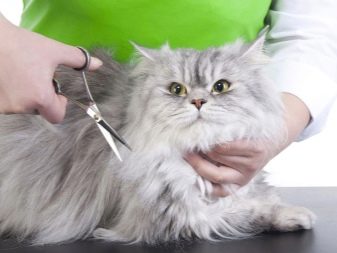
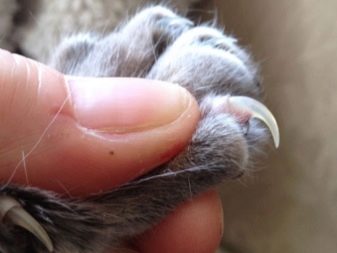
Restroom
Any tray is suitable for the British, when it is selected, there are no significant criteria. The size of the tray depends on the size of the cat. It is necessary to select a toilet so that the pet can freely turn around in the tray. The cat pot filler can be anything.
Walks
With age, the British do not become as mobile as in childhood, they lead a measured lifestyle. The apartment is quite enough for them, and they do not have a special desire to go beyond its territory.
But still, from time to time, walking is necessary.
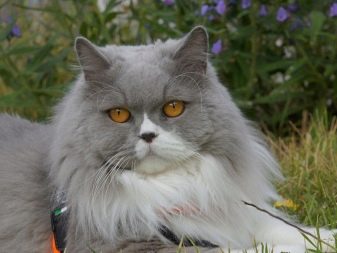
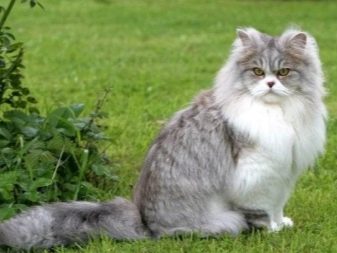
Feeding
Highlander diet needs to be carefully considered. Natural foods are only welcome in pet food. Dry food can also be used when feeding cats. They are selected according to the preference of the animals, their gender and age. It is not recommended to give food to pets from the human table.
The British are known to have a good appetite and can often overeat. Subsequently, this can lead to obesity of the animal. Therefore, owners should carefully monitor the cat's serving volume.For one kilogram of highlander weight, 70 kilocalories will be enough. Products that must be included in the diet of long-haired British cats:
- cereals;
- boiled fish meat (preferably removed bones);
- lean meat;
- germinated grain;
- dairy products with a minimum percentage of fat content;
- quail eggs;
- boiled meat offal.
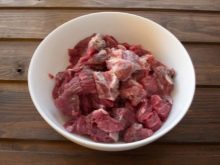
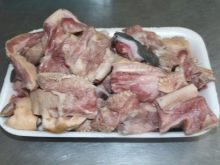

The British prefer to eat raw meat. Before serving, the product is frozen, after which it is poured with boiled water. When the meat is completely thawed, it is cut into small pieces and served to the pet.
Products that are not recommended to be included in the diet of long-haired British cats:
- pickles;
- potatoes;
- smoked meats;
- sweets;
- fried foods;
- spicy food;
- tubular bones.
To make their life easier, many owners prefer to feed their furry pets with prepared foods. When choosing them, it is advisable to dwell on premium quality products. For long-haired breeds, there are special feeds. The advantage of such food is that it is saturated with useful substances in the form of vitamins and minerals.
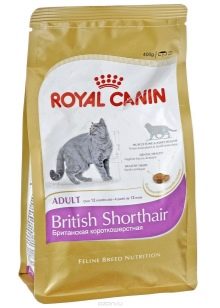
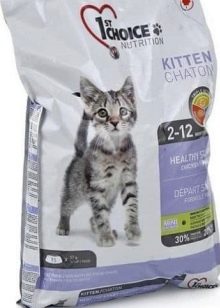
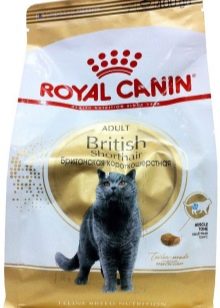
The British need to give water in its pure form and change daily.
Kittens should be fed at least 5 times a day in small portions. By the age of one, the number of meals is significantly reduced. In the future, pets receive food 2 times a day.
Breeding
The breed of long-haired British cats is considered new and not yet sufficiently improved. For this reason, the process of breeding animals contains some difficulties. Only purebred British of the same breed need to be crossed. There are times when breeders use short-haired cats for breeding, whose ancestors had long hair.
When choosing a partner for the Briton, it is necessary to adhere to some conditions:
- compliance of the animal with all breed standards;
- availability of documents for the pet and pedigree;
- good health;
- lack of external defects;
- the presence of a special vaccine vaccine, which must be given a couple of weeks before mating animals.
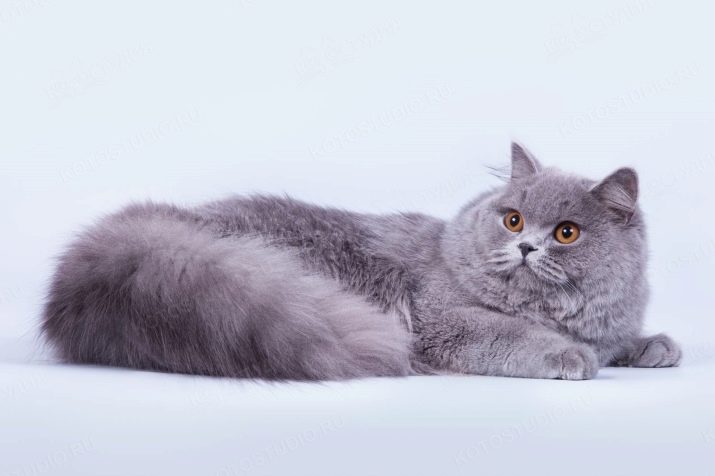
Before breeding partners, you need to check for compatibility of blood types. To do this, you must pass a DNA test.
Long-haired British reach puberty at an early age - from 6 to 9 months. You can mate a female only after reaching the age of one. Otherwise, you can get unhealthy offspring. Males can lose their strength at the age of two years.
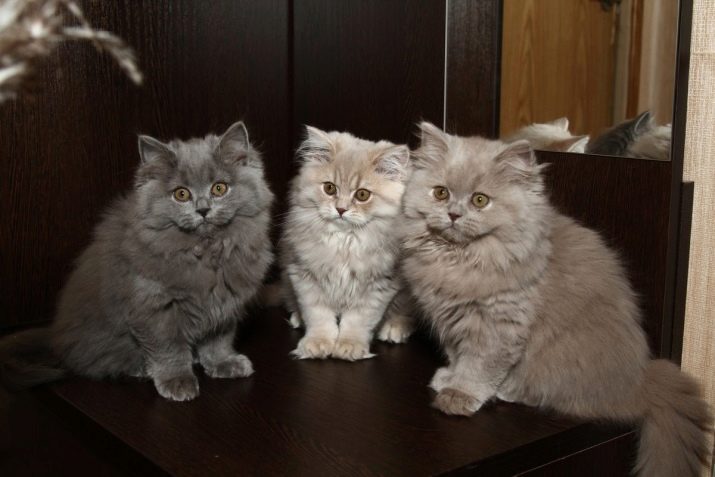
Unlike other representatives of thoroughbred animals of the cat family, estrus is less common in female highlander. Therefore, it is advisable to breed them no more than twice a year.
Interesting facts about British cats, see below.
